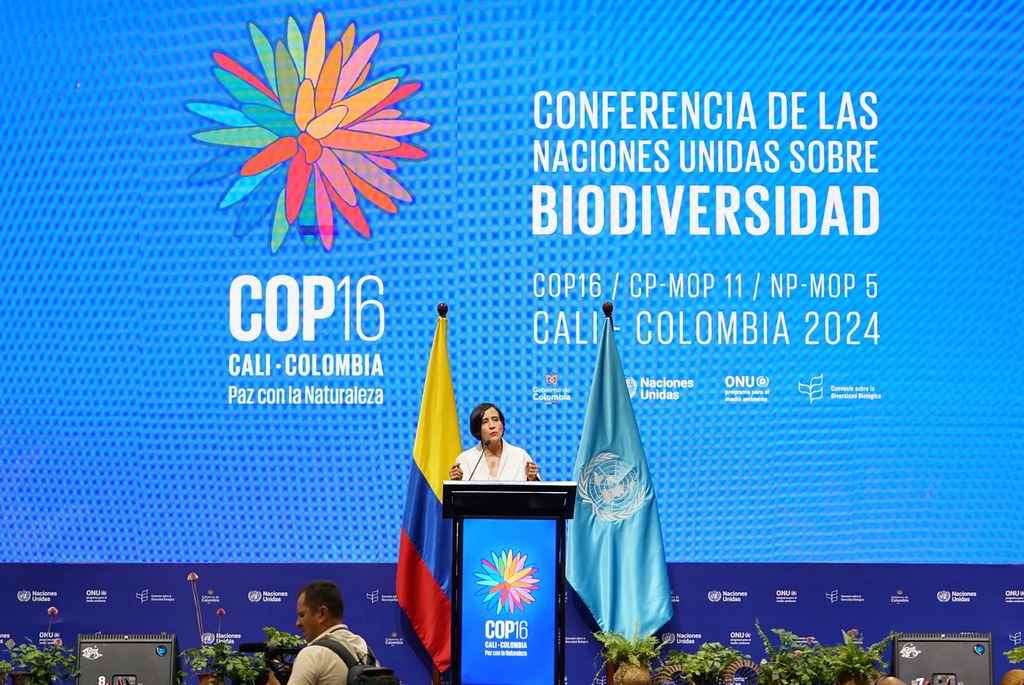05-11-2024
COP16 concludes with a crucial agreement but also with pending challenges: what are the future prospects?
COP16, held in Cali, Colombia, has ended after intense days of debate and negotiation by the participating countries to lay the foundations for a sustainable future and strengthening adaptation, mitigation, and financing commitments to face environmental challenges current. Despite achieving outstanding progress, such as the creation of a new global biodiversity fund and greater inclusion of indigenous communities, the summit has also left pending important challenges for the coming years.
Inclusion of indigenous communities and funds for genetic resources
One of the most notable achievements of COP16 has been the formal recognition of indigenous communities within the UN's biodiversity decision-making process. This measure represents a significant step to ensure that these communities can directly influence conservation policies, respecting their ancestral knowledge about ecosystem protection.
In addition, the “Cali” fund has been created to share the benefits derived from the commercial use of genetic resources. This fund will apply a tax to companies that use information from nature's digital sequences, such as those used in pharmaceutical research. It is estimated that this fund could generate billions for biodiversity conservation, with the proceeds going, in part, to indigenous communities and developing countries.
The resilient and growing presence of civil society
According to the testimony of Guillem Rius, IRBio-UB researcher of the Unburned project present at COP16, civil society has played a key role in the discussions at the summit. Colombia has promoted the participation of young people, local communities and women, placing special emphasis on the feminist and intergenerational vision of biodiversity. Despite this inclusion, in practice decision-making is still in the hands of states, and the perspectives of local communities are often displaced by geopolitics and Western visions of conservation.
Insufficient funding
The lack of resources has been one of the most critical and disappointing points of COP16. Funding commitments set out in the Kunming-Montreal Global Biodiversity Framework, which include a goal of raising $200 billion annually for biodiversity protection, have not been met. So far, only 200 million have been achieved, an insufficient amount to meet global conservation challenges.
Katherin Otalora, IRBio-UB researcher and representative of the Andes Biological Station, highlights the urgent need for direct and intermediary-free funding for local communities. This reform in the mobilization of resources has been discussed with entities committed to sustainability, but there is still a long way to go to ensure the necessary funding flows.
Pending challenges: monitoring the objectives and integrated protection of Biodiversity and the Climate
Another key point that remained unresolved is the monitoring system for the biodiversity targets set during COP 15 for this decade. Despite ambitious targets, including conserving at least 30% of biodiversity and restoring at least 30% of degraded areas by 2030, only 44 out of 196 countries have updated national biodiversity protection plans to incorporate the new milestones . The lack of a clear control mechanism is an obstacle to guaranteeing the achievement of the 23 objectives agreed at COP15. This lack of alignment shows a growing gap between the current reality and the commitments made, but there is still no consensus on the indicators that will be used to assess the state of biodiversity. This complicates the monitoring and implementation of effective measures. Stronger action is urgently needed to ensure that these plans are reviewed and implemented in a manner consistent with the overall goals.
Finally, COP16 has highlighted the essential interconnection between biodiversity and climate change. The president of the summit, Susana Muhamad, has insisted that protecting biodiversity and reducing emissions are two sides of the same coin. Despite this, the negotiations have not been able to include specific commitments on the elimination of fossil fuels, one of the biggest drivers of the climate crisis.
COP16 has marked significant progress in the diplomatic and social sphere, but the path to achieving effective protection of biodiversity remains full of challenges. The upcoming conferences will be key to ensuring that commitments are translated into tangible actions and real change in global conservation.
Sources: Carbon Brief and The Guardian
